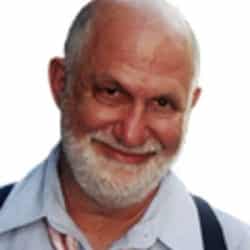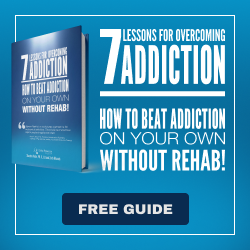The Solution to the Opioid Crisis
Everyone has a solution for the opioid epidemic. Here’s a real one.
Here’s what we must do to improve our addictive situation
In 2016, the American Surgeon General, Vivek Murthy, announced in a new report on addiction, as though he had just discovered the structure of DNA, “Addressing the addiction crisis in America will require seeing addiction as a chronic illness, not as a moral failing. Addiction has been a challenge for a long time, but we finally have the opportunity and the tools to address it.” At last, we’re ready to solve addiction!
Murthy has lately been joined by such medical and social luminaries (both of whom I admire) as Atul Gawande and J.D. Vance.
Instead of presenting solutions, however, Murthy simply rehashed our tried-and-failed American bromides. In their place, I outline the actual strategies, almost the reverse of what he is proposing, to solve our addiction crisis.
Murthy’s Bromides
1. Scare people (even more!) about opioid “overdoses.”
If people were to consume pure doses of heroin or other opioids, their likelihood of accidental death is reduced to nearly naught. Yet the myth that people typically develop an inordinate, insatiable desire for a single drug—when in fact those most at risk are mixing a variety of substances in what can be considered either a chaotic pattern or an abandoned, intentionally self-destructive one—still fatally misinforms our policies.
2. Convince people that drugs cause addiction.
The headline news from the Surgeon General’s report: “1 in 7 in USA will face substance addiction.” “We underestimated how exposure to addictive substances can lead to full blown addiction,” Murthy told NPR. “Opioids are a good example.” Note to the Surgeon General: The definitive U.S. psychiatric guide, DSM-5, no longer applies the term “addiction” to any substances, but only to non-drug activity. How he rationalizes his perspective that drugs have an insufficiently recognized special quality of addiction with the DSM-approved possibility of becoming addicted to gambling, or the non-DSM-approved but still-real possibility of becoming addicted to sex, love, the internet or any other compelling involvement, is anyone’s guess.
Addiction is not in the thing. Addiction is in the life. And when addiction is understood as being steeped in people’s lives, we recognize that myriad drug or non-drug experiences are liable to become compulsively destructive. The thrust of Murthy’s thinking—an impetus to further restrict access to certain drugs—is as flawed conceptually as it is unachievable practically.
3. Emphasize “prevention”—meaning avoiding substance use altogether.
“The earlier people try alcohol or drugs,” says the surgeon general’s report, “the more likely they are to develop a substance use disorder.” Prevention, to Murthy et al., means prevention of drug use, as opposed to what it should mean: prevention of addiction or death.
These U.S. statistics are meaningless when considered outside of people’s life context in America, a context I provide in my book, Addiction-Proof Your Child.
Consider that in Southern Europe, where people begin drinking legally at much younger ages (typically 16), rates of problematic drinking are far lower than in the U.S. and other temperance (Northern European and English-language) countries. Consider that in the U.S., given restrictions on the use of alcohol and other drugs, people’s first experiences with them are likely to be binge episodes with their peers, rather than moderate use with older, experienced family members. Consider that despite “Just Say No” being repeated to kids for decades, 40 percent have used marijuana by the time they leave high school, and 33 percent have drunk alcohol in the last 30 days—the majority of whom, critically, have engaged in binge-drinking. Both of the numbers rise rapidly following high school and into people’s early 20s.
Simply teaching people not to use drugs has gotten us where we are today.
4. Hype supposed biological causes of addiction and minimize social causes.
“We now know from solid data that substance abuse disorders don’t discriminate,” Murthy told NPR. “They affect the rich and the poor, all socioeconomic groups and ethnic groups. They affect people in urban areas and rural ones.”
This is quite wrong. Addiction does affect people from all backgrounds, but not at equal rates. It does discriminate. As discussed by Maia Szalavitz:
“Addiction rates are higher in poor people — not because they are less moral or have greater access to drugs, but because they are more likely to experience childhood trauma, chronic stress, high school dropout, mental illness and unemployment, all of which raise the odds of getting and staying hooked.”
Murthy instead pursues a line of thinking, our neurochemical revolution, that has yet to produce a single meaningful diagnostic or treatment tool: “Now we understand that these disorders actually change the circuitry in your brain. They affect your ability to make decisions, and change your reward system and your stress response. That tells us that addiction is a chronic disease of the brain.”
Murthy’s misdirection supports our heavily funded medical efforts to thwart addiction while we ignore the critical social levers for reversing our addiction epidemic—an approach that would instead require major social change to address the havoc in poor urban and rural communities that turns them into addiction hubs.
5. Expand our drug treatment industry and addiction support groups.
“We would never tolerate a situation where only one in 10 people with cancer or diabetes gets treatment, and yet we do that with substance-abuse disorders,” said Murthy, speaking of an estimated 20.8 million Americans with these disorders.
Contrary to this perceived shortfall, no other country in the world provides as much disease-oriented addiction treatment (i.e.,12-step and vaguely biomedical treatment—“vaguely” since no treatments actually directly address supposed brain centers of addiction) as does the US. Yet North America, as a global harm reduction report notes, has the “highest drug-related mortality rate in the world.”
Research repeatedly demonstrates that those addicted to drugs regularly solve their addictions given supportive life conditions. In fact, the large majority of dependent drug users reverse addiction on their own—most who ever qualify for a substance use disorder diagnosis move past it by their mid-30s.
How are we providing so much treatment with such bad outcomes? This is because we are incapable of acknowledging that that most addiction treatment is no more effective than the ordinary course of the “disease.” And, thus, we can’t focus on what about people’s lives enables them to recover, and to encourage these conditions, rather than thrusting more and more people into treatment.
I Would Remedy (Well, Improve) America’s Drug and Addiction Problems
What, instead, are the messages that the U.S. surgeon general should be spreading?
1. Loudly advertise the dangers of drug-mixing. Spread this message widely, including in schools, along with other critical information about drugs, while teaching drug-use and life skills.
2. Call for legal regulation of heroin and other currently illegal drugs to protect users from unwittingly consuming the haphazard, fraudulent and dangerous combinations often sold on the street. Call for painkillers to be available to people who want them under medical supervision, along with heroin maintenance sites, while making medical or other trained supervision of use available.
It is worth noting here that just as the Surgeon General’s addiction report came out, the British Medical Journal issued a clarion call: “The war on drugs has failed: doctors should lead calls for drug policy reform.” The BMJ’s report does not contain the words “brain,” “disease,” or “addiction.” Instead, it asserts:
“…a thorough review of the international evidence concluded that governments should decriminalize minor drug offenses, strengthen health and social sector approaches, move cautiously towards regulated drug markets where possible.”
3. The SG’s report does note the usefulness of medication-assisted treatment including drugs like methadone and buprenorphine to assist in quitting heroin with greatly reduced risk, but fails to recognize that, time and again, medications like naltrexone and baclofen are insufficient in themselves, and hardly improve overall outcomes, in quitting a drug or alcohol addiction.
4. Demand the full-scale deployment of other harm reduction services and supplies, from naloxone (Narcan) to syringe access to supervised drug consumption rooms—an expansion that will not only save many lives, but also do far more to reduce the stigmatization of people who use drugs than the empty words in the current report.
5. Make clear that addiction is not a disease and therefore, that it is escapable and not a lifelong identity. Instead, point out, it is a phenomenon driven by psychological and social factors, and therefore inseparable from the realities of people’s daily lives. Publicly tell politicians that if they really care about reducing addiction, taking meaningful steps to address inequality and absence of opportunity and to rebuild meaningful community would be the single best thing they could do.
6. Declare that we must abandon the futile goal of a drug-free society, which decades of efforts and billions of dollars have been unable to accomplish. Instead, recognize that we are all drug users—from caffeine and alcohol to prescribed medications to commonplace Adderall use by students. Affirm that drugs are a normal part of human experience, that they provide benefits, and that they are even enjoyed—despite their potential dangers. This is how we approach experiences and involvements—from driving to love and sex—that can have dangerous or overwhelming effects. It’s how alcohol is used throughout Southern Europe—indeed, this is how the large majority of Americans who drink think about alcohol.
Radical as this is to American ears, we must normalize and rationalize the reality of our drug use—as opposed to encouraging uncontrolled and chaotic use of drugs while simultaneously vilifying and demonizing them.
As Murthy’s report trumpets by way of perversely recommending more of what has long failed us: An American dies every 19 minutes from narcotics-related drug use. Or, as Gawande points out, more Americans now die of overdoses (they’re not overdoses, see above) than died of AIDS at the peak of that epidemic. He recommends better prescription practices—which is lot like proposing tax (or health care) reform. After it passes (if it does pass) the new system is immediately assailed for a whole new host of problems.
Vance simply announces in his New York Times op-ed that he is “founding an organization to combat Ohio’s opioid epidemic,” but doesn’t offer a single opioid-related solution. Actually, Vance’s book Hillbilly Elegy: A Memoir of a Family and Culture in Crisis, shows that purpose and community are the cure—just as their absence is the problem. Let’s hope that Vance, a moral and brilliant man, is able to affect these critical factors in Ohio, setting a model for proceeding elsewhere.
But what we really need is a whole new way of thinking.
Comments
Submitted by Charles on March 16, 2017 – 7:28pm
Thank You! Dr. Peele! I’ve read it twice and I don’t see a flaw. I see that after the “epidemic” scare, this will be delayed if completely followed either. I also know of many who think drugs are part of the tactics of enemies of the USA! I agree! Only because it’s been allowed to be in that context! Again the first real workable solution! Probably the most cost effective as well! I will be sharing around! 🙂
Awesome TRUTH Article
Submitted by Diane Gracely on March 16, 2017 – 7:43pm
This is the BEST article I’ve EVER read. Thank you!!!! This is PURE truth at it’s finest.
Solution to the Opioid Crisis
Submitted by Carolyn on March 17, 2017 – 1:24pm
Thank you, Dr Peele for inserting some desperately needed sense to the past 5 years of my disfunctional life. It’s good to know someone has the intelligence to convey what is so frustratingly obvious! How can so many adults be so hard headed and just……stupid. It’d be so great to see even one of your thoughts be put into action for our society.





